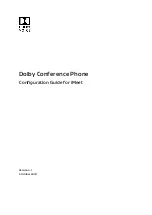
System Functions and Features as of I7.9
116
Routing elements
sy
d-
020
0/3.
0
– I7.
9
– 1
1
.2009
4. 9
Operator Console
The system has one switching centre, which is defined under the name
Operator
Console
in the internal numbering plan. Several Operator Consoles can be operated
on the same PBX. There are two types of Operator Consoles:
•
The Office 1560/1560IP PC Operator is an OIP client application which is con-
nected via the mainboard’s Ethernet interface. On the Office 1560, voice is trans-
mitted via the AD2 interface of a system terminal; on the Office 1560IP this is
done via IP, for example via a headset connected to the PC.
•
The Aastra 5380/5380ip system terminal can be used as an AD2 or IP Operator
Console in combination with an Aastra M535 expansion keypad.
•
The Office 45 system terminal as an Operator Console connected to the AD2 in-
terface is supported as before.
With the exception of type-specific characteristics the following explanations apply
to all types of Operator Console. Details and properties can be found in the type-
specific documentation.
4. 9. 1
Routing Functions for Incoming Calls
Routing an Outside Call
Incoming calls are routed to the Operator Console(s) either directly or via a user
group a call distribution element.
On an Aastra 5380/5380ip or Office 45 Operator Console the calls are provided on
the line keys. If all the line keys are busy, other calls will be sorted into the call
queue.
On an Office 1560/1560IP, the calls are entered in the external call queue. To an-
swer the call the operator selects it directly from the call queue displayed on the
graphic interface.
The operator can tell who the callers are from the call queue and can answer any of
the call; the queue sequence does not have to be respected.
















































